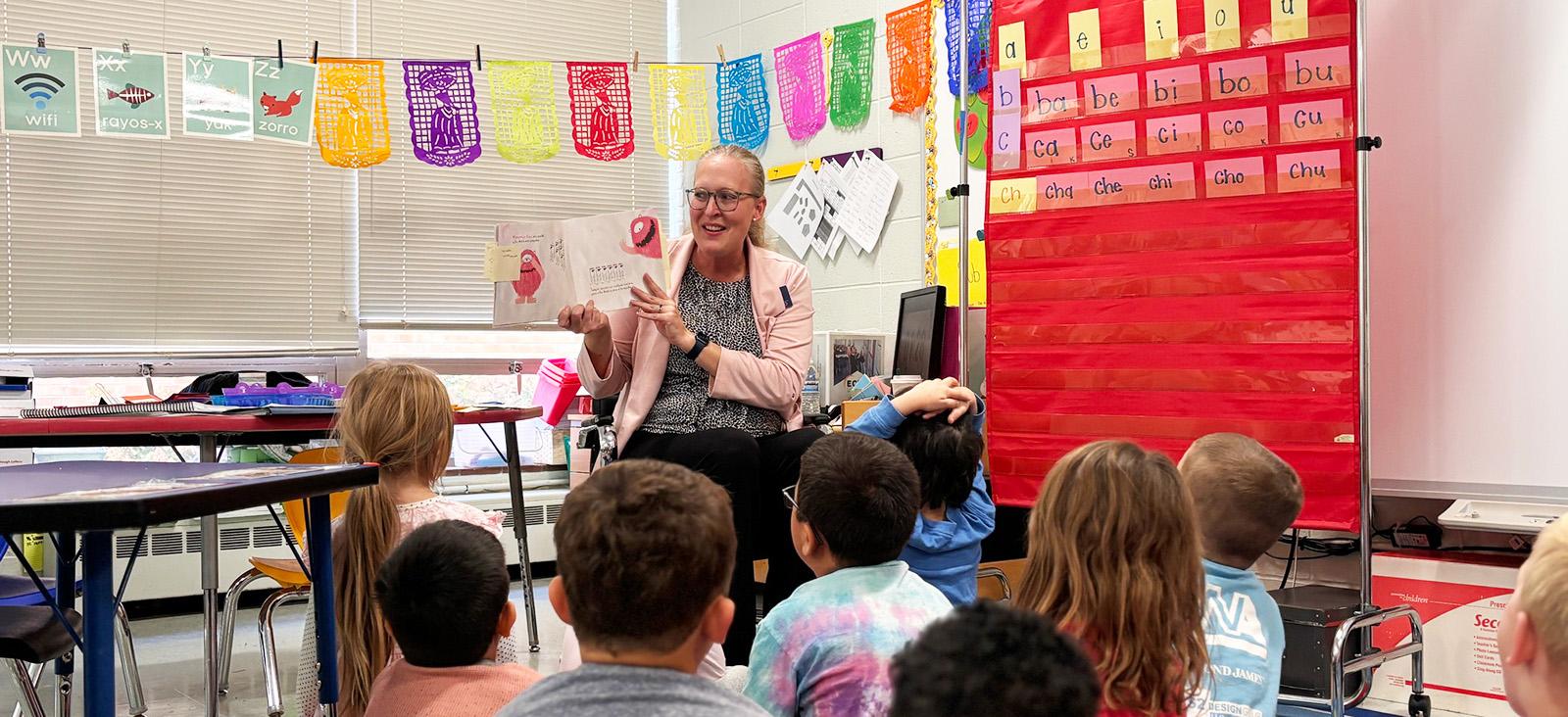Early Childhood Language Intensive Program

Impact
ECLIP by the Numbers
*Teacher observational data, reported on ECLIP rubric.
Implementation
ECLIP: The What?
The ALMA Initiative’s Early Childhood Language Intensive Program (ECLIP) helps Catholic schools implement bilingual programming at the early childhood level. The program equips schools with rich curricular resources and teacher training to develop students’ foundational literacy skills in Spanish, deliver engaging lessons, and participate in daily language routines through prayers, stories, songs, math activities, and games.
The ECLIP program provides a strategic academic on-ramp for Spanish-speaking Latino children, as well as attracting a diverse array of families to Catholic schools who recognize the cognitive, career, spiritual, and interpersonal value of learning more than one language.
ECLIP: The Why?
- Today’s preschool populations offer a glimpse of tomorrow’s demographics
- Latino children make up the largest and most rapidly growing racial and ethnic minority population in the United States
- Of the children in the U.S. under age five, 4.2 million or 21% are Hispanic (PEW, 2018).
- Closing the school readiness gap
- Latino children often start kindergarten less prepared and are unable to catch up during the primary grades. Latino children are enrolled in preschool at substantially lower rates than their peers (Garcia & Gonzalez, 2012; Keierleber, 2019).
- The academic achievement gap between English learners and monolingual learners begins before Kindergarten and persists even after students have been in school for years, but high-quality dual language early childhood instruction that accounts for social, cognitive, emotional, and communicative skills of ELs can help close or eliminate this achievement gap (Waldfogel, 2012).
- Catholic schools benefit from strong early childhood programming
- Preschool programs serve as critical entryways, providing pipelines for future enrollment and growth. Preschools are indicators of the long-term viability of a Catholic school (NCEA, 2023).
- Early childhood programming is a strategically significant component of the Catholic educational enterprise and deserves the attention of ACE (Frabutt & Waldron, 2013).
- For Latino families, access to excellent bilingual preschool programs is especially critical
- School readiness and success for children who are dual or multi-language learners is tied directly to mastery of their home language (Zelasko & Antunez, 2000).
- A 2021 policy report from the University of Chicago Consortium on School Research and the Latino Policy Forum, argued that policymakers and school systems should prioritize admission for emergent bilingual children in pre-K programs (De la Torre, Freire, & Blanchard, 2021).
ECLIP: The How?
Structure:
ECLIP students will receive instruction in Spanish for 30 minutes daily throughout the school year. With this model of Spanish as a “specials” class, early childhood students spend the remainder of their day learning in English. Therefore, this model aligns with Spanish as a world language, as opposed to being a Dual Immersion Model (DLI).
Curriculum:
Students will experience a series of fun and developmentally appropriate activities in Spanish, including read alouds, phonemic awareness, phonics, vocabulary, songs, prayers, games, poems, art activities, math activities, etc.
The ECLIP program provides schools with the resources and training they need to ensure their bilingual programming is pedagogically rich and engaging. Resources provided to schools include:
- ECLIP curriculum binder for PreK or K, based on monthly thematic units
- Spanish language mentor text set for PreK or K
- Spanish phonics program for PreK or K
- Monthly ECLIP instructor professional development sessions via Zoom (in Spanish)
- ECLIP principal orientation session via Zoom (in English)
- Orientation session with ECLIP instructors (in Spanish)
- Monthly Professional Learning Community with ECLIP instructors from other schools
- Access to a robust ECLIP resource website that accompanies the curriculum (including read aloud videos, real classroom examples of ECLIP component implementation, songs, vocabulary cards, etc)
Staffing:
The ECLIP program will be led by a staff person or volunteer who speaks Spanish as their first language (native speaker). ECLIP instructors have been appropriately vetted by the school pastor and principal in accordance with diocesan or archdiocesan protocols. At your school, the ECLIP teacher(s) may be a classroom teacher, teacher assistant, paraprofessional, parent or parish volunteer, retired educator, etc. The most important qualifications are that the ECLIP teacher is committed to the school and parish community and speaks Spanish fluently.
Duration:
ECLIP is currently a two-year commitment for schools that covers Pre-Kindergarten (ages 3-5) and Kindergarten grade levels. In the past, we offered a first grade pilot program, but we are not enrolling new schools at this time.
Inquiries:
New Catholic schools are admitted into the ECLIP program once a year in the early spring to begin the following school year. Participation in ECLIP requires a two-year commitment covering Pre-Kindergarten (ages 3-5, depending on your state) and Kindergarten. If your school or (arch) diocese is interested in learning more about the ECLIP program, please fill out our inquiry form and someone from our team will be in touch.
For any questions, please contact Elisa Dralle (edralle@nd.edu) or visit our FAQs page.
